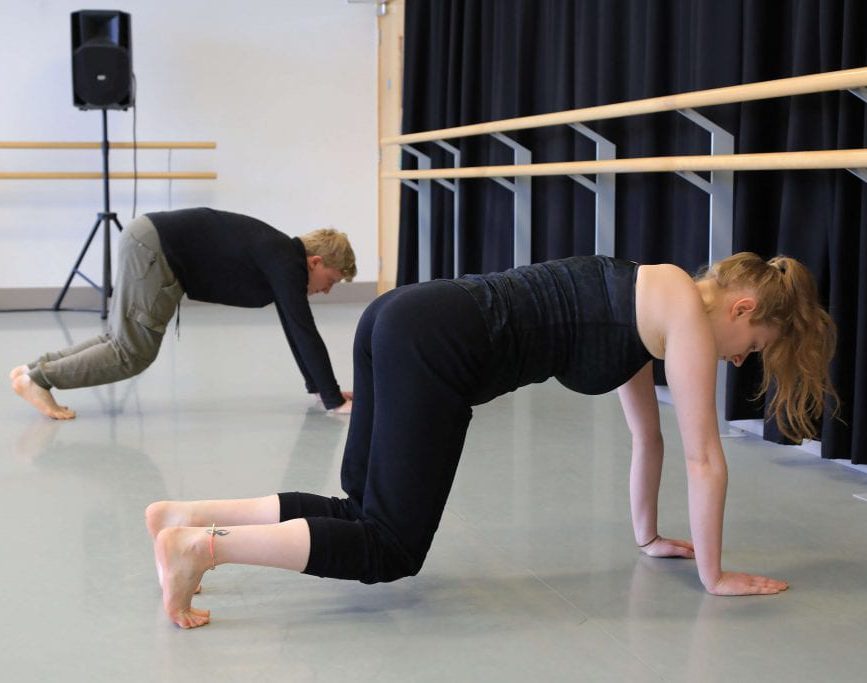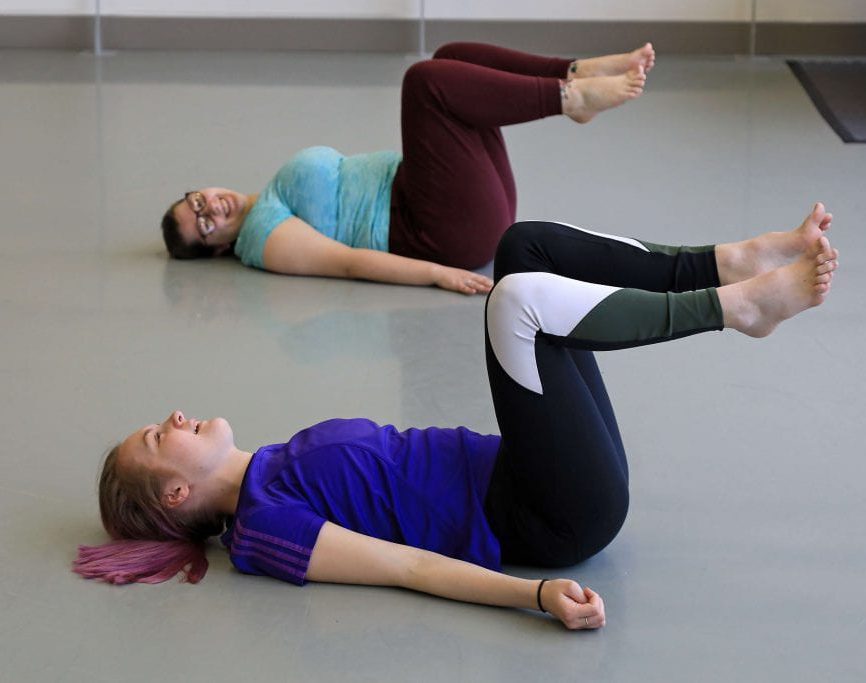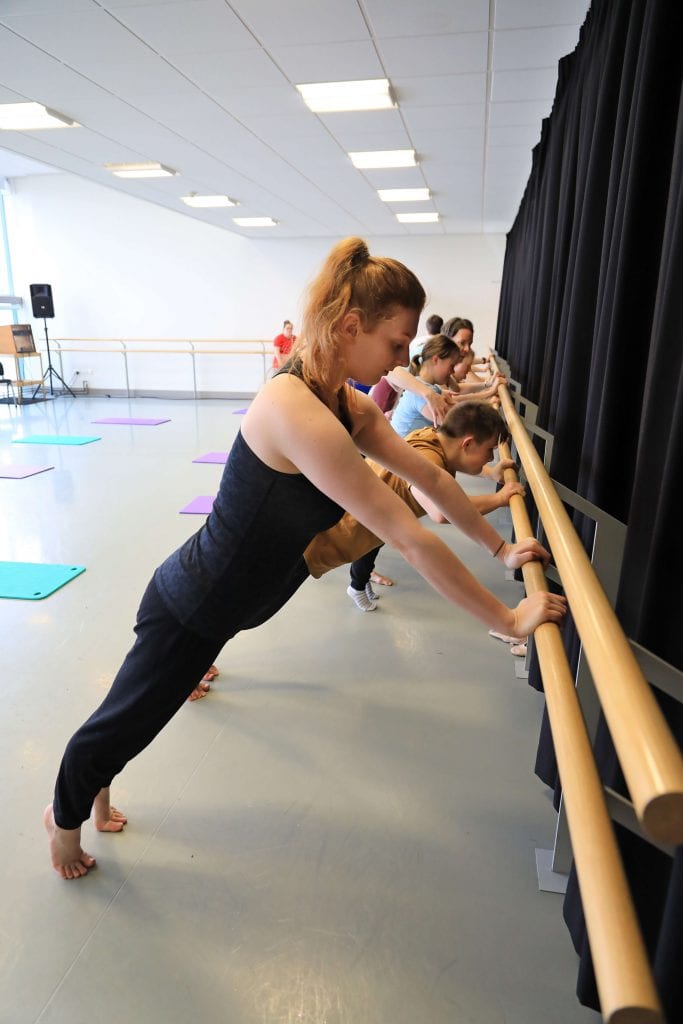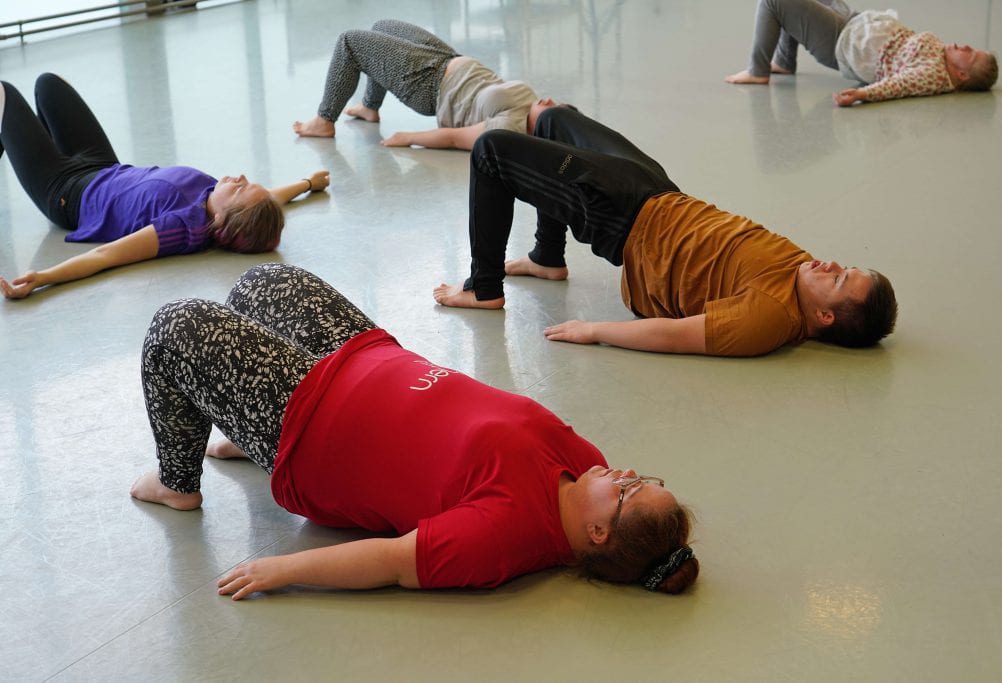Strength
Strength refers to the amount of force required across a range of motions to safely and efficiently control movement.
Strength refers to the amount of force required across a range of motions to safely and efficiently control movement. The purpose of this activity is to develop strength throughout the body.
During strengthening exercises, maintaining correct alignment is key. This is to ensure that safe and efficient movement patterns are developed.
The duration of these exercises should be short as dancers with hypermobility can fatigue quickly. The length and intensity of strengthening exercises can gradually be extended as stamina builds.
Strengthening exercises that involve weight bearing on hands can be difficult for some dancers, especially those with hypermobility. In order to combat overburdening wrists and joints:
* practice little and often
* rest and gently rotate or stretch wrists between repetitions
* take weight off the wrists by ensuring the shoulder is in line with the heel of the hand rather than fingers
* resting in child pose between exercises
Effective movements for building strength in a floor exercise include:
* knee hover
* table top
* press up (full, from knees, against wall)
* bridge
* plank
* moving on hands and feet




Core stability and safe dance practice
For some dancers, coming up to a sitting position after lying flat can be challenging due to spinal mobility, or due to the length of the spine in proportion to the limbs. Rather than lying flat, the dancer could use a chair, as standing up from a seated position engages the core, and lessens the strain on the spine. Play with repetition, rhythm and speed to add challenge and fun.
Dancers must ensure the core is activated when pushing away from the floor onto all fours or into plank position. This is especially important for those with lordosis, in order to protect the spine and lower back from injury. By using imagery, such as imagining an ice cube is under your belly, and practising with a peer giving feedback, can help achieve this. Practising press ups using a barre can be effective in enabling dancers to find correct alignment, action and also to build strength in the upper body and core.
The European Commission support for the production of this publication does not constitute an endorsement of the contents which reflects the views only of the authors, and the Commission cannot be held responsible for any use which may be made of the information contained therein.
Teaching Guidelines
This activity uses a wide range of teaching methods to appeal to different learning styles. Visual and tactile methods of communication are generally more accessible and effective for dancers with additional learning support needs.
In this activity we used the following methods of delivery. However, you may find others on the list more suitable for your dancers:
Auditory
* verbal instructions
* use of voice (intonation, pace)
* use of music/sounds
* imagery delivered verbally
Visual
* physical demonstrations
* visual imagery (picture, object)
Tactile
* tactile cues given by self, peer or teacher
* physical objects
Kinaesthetic
* experience how the movement may feel, e.g. stretching a resistance band
Feedback
* verbal feedback from peer or teacher
* visual feedback from peer or teacher
* tactile feedback from peer or teacher
* visual feedback and self-correction





